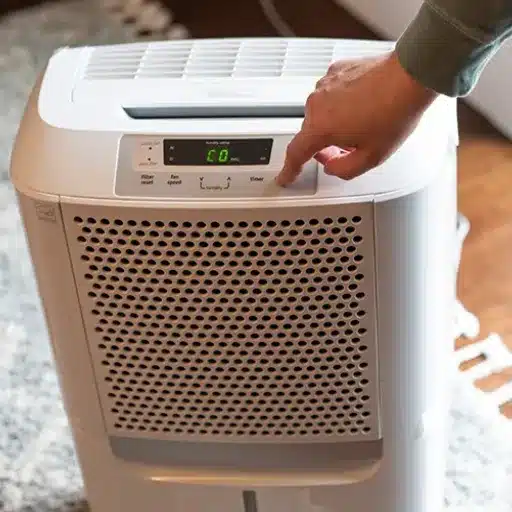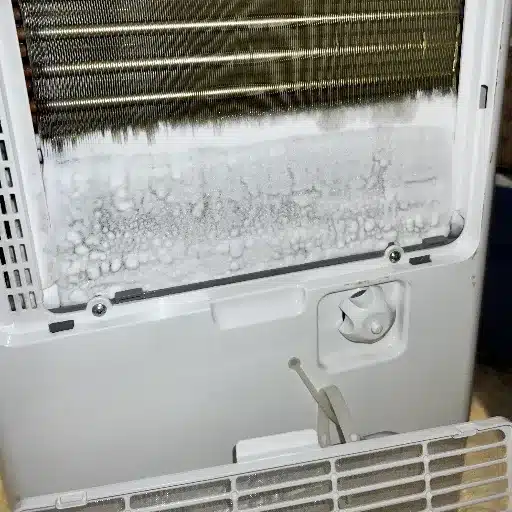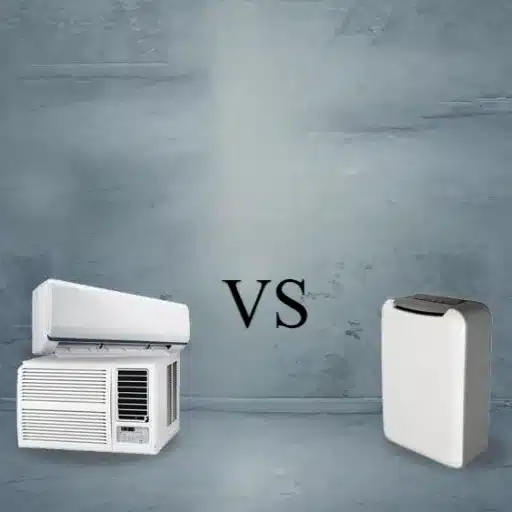Crawl spaces are often overlooked parts of our homes, yet they play a crucial role in maintaining structural integrity, air quality, and energy efficiency. However, these spaces are highly susceptible to excess moisture, which can lead to mold growth, pest infestations, and long-term damage. That’s where crawl space dehumidifiers come into play. But before investing in one, it’s essential to understand the costs involved and what factors influence them. In this guide, we’ll break down everything you need to know about crawl space dehumidifier costs, from upfront expenses to long-term savings. Whether you’re a homeowner aiming to protect your property or someone exploring moisture control solutions, this article will provide the clarity you need to make an informed decision. Stay with us as we uncover the key considerations, benefits, and tips to find the right dehumidifier for your crawl space.
What Factors Affect the Dehumidifier Costs for Your Crawl Space?
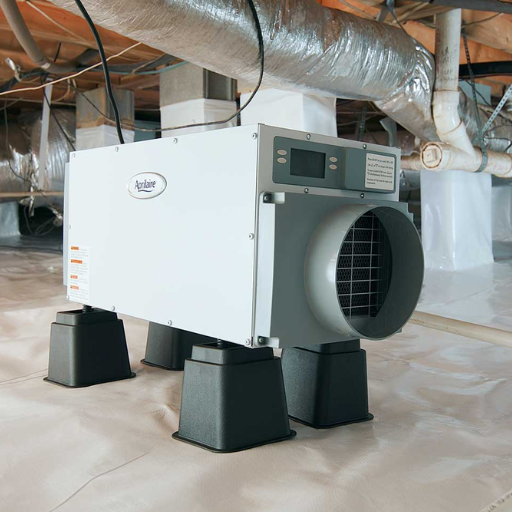
The cost of a crawl space dehumidifier depends on several key factors:
- Size of the Crawl Space – Larger crawl spaces require dehumidifiers with higher capacity, which can increase the upfront cost. It’s important to choose a unit suited to the square footage of your space.
- Energy Efficiency – Energy-efficient dehumidifiers may have a higher initial price but can save you money in the long run by reducing electricity bills.
- Features and Performance – Additional features such as built-in humidity monitors, automatic drainage, or enhanced filters can add to the cost but improve convenience and functionality.
- Brand and Quality – Recognized and reputable brands often provide better durability and performance, which can affect pricing.
- Installation Needs – If professional installation or modifications to your crawl space are required, this will contribute to overall costs.
By considering these factors, you can select a dehumidifier that balances cost with effectiveness, ensuring long-term protection for your crawl space.
Understanding the Upfront Cost of a Dehumidifier
When purchasing a dehumidifier, understanding its upfront cost is crucial for making an informed decision. The price of a dehumidifier can vary widely depending on the unit’s capacity, advanced features, and brand reputation. On average, residential dehumidifiers range from $100 to $300 for smaller units suitable for spaces under 1,000 square feet. Larger, more powerful units designed for basements or whole-home use typically cost between $300 and $1,500.
High-end models often include additional features such as built-in pumps, smart connectivity for mobile control, and energy-efficient certifications, which can increase the initial purchase price. For example, an ENERGY STAR-certified dehumidifier, though potentially more expensive upfront, can save significantly on energy bills over time by operating more efficiently.
Additionally, specialized crawl space dehumidifiers—engineered to handle the unique conditions of these areas—are usually priced between $800 and $2,000 due to their enhanced performance capabilities. While this cost might seem steep, these units are specifically designed to prevent moisture buildup and structural damage in enclosed spaces, justifying their higher price point.
It’s also important to consider the cost of accessories, like drainage hoses or mounting kits, which may not be included with the unit. Factoring these elements into your budget ensures you account for any supplementary expenses associated with the dehumidifier’s functionality and installation.
The Role of Crawl Space Encapsulation in Cost
Crawl space encapsulation is a critical factor in determining the overall cost of controlling moisture and improving air quality in a home. Encapsulation involves sealing the crawl space with a heavy-duty vapor barrier, often paired with insulation and a dehumidifier, to create a controlled environment. While initial investment costs for encapsulation can range from $1,500 to $15,000 depending on the size of the space, materials used, and labor involved, the long-term benefits often outweigh these expenses.
Encapsulation improves the home’s energy efficiency by reducing the amount of air leakage and preventing drafts. Homeowners can expect up to a 20% reduction in energy bills over time as HVAC systems work more efficiently in a controlled environment. Additionally, it shields the home from moisture-driven issues such as mold growth, wood rot, and pest infestations, which can lead to repair costs in the thousands of dollars if left unchecked.
Statistics suggest that homeowners investing in crawl space encapsulation may recoup an estimated 50-60% of the upfront cost through energy savings, fewer maintenance expenses, and increased property value. Encapsulation also prolongs the lifespan of HVAC systems and flooring, further contributing to cost efficiency in the long run. While the initial cost may seem substantial, the comprehensive improvements to home comfort, air quality, and moisture protection make crawl space encapsulation a worthwhile investment.
How the Size of Your Crawl Space Influences Costs
The size of your crawl space plays a crucial role in determining the overall cost of encapsulation. Larger crawl spaces require more materials such as vapor barriers, insulation, and sealants, which can significantly increase expenses. On average, the cost of crawl space encapsulation ranges from $3,000 to $15,000, with pricing heavily influenced by the square footage. For instance, smaller spaces below 1,500 square feet typically fall on the lower end of the spectrum, often costing between $3,000 and $7,000. However, for crawl spaces exceeding 2,500 square feet, costs may climb to $10,000 or more due to the extensive labor and materials required.
Additionally, larger crawl spaces may need more time to complete, increasing labor costs. Professional installation typically charges per square foot, with average rates ranging from $3 to $7 per square foot depending on factors like local labor prices and project complexity. Furthermore, the size directly impacts the amount of insulation and dehumidification equipment you may need, with larger spaces often requiring higher-capacity dehumidifiers or additional drainage systems to ensure proper moisture control.
When budgeting for encapsulation, it’s also essential to factor in the condition of your crawl space. Larger spaces with existing water damage, mold, or debris may incur additional costs for cleaning and repairs before the encapsulation process can begin. Understanding these variables ensures homeowners can make informed decisions about the costs associated with their specific crawl space needs.
How to Choose the Right Dehumidifier for Your Crawl Space
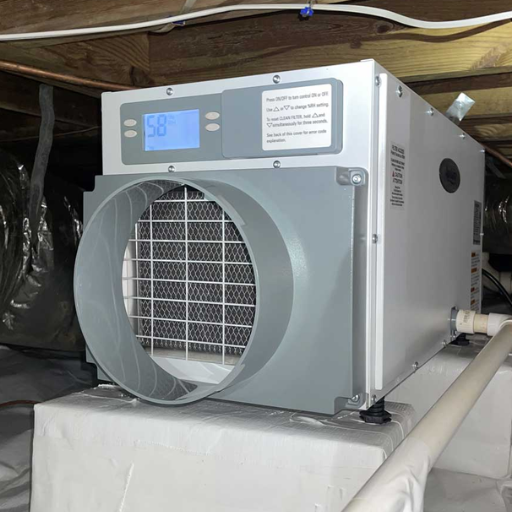
Selecting the right dehumidifier for your crawl space requires evaluating crucial factors to ensure efficiency and effectiveness:
- Crawl Space Size: Measure the square footage and height of your crawl space to determine the capacity of the dehumidifier needed. Larger spaces generally require higher-capacity units.
- Moisture Levels: Assess the humidity levels in your crawl space. Dehumidifiers with higher pint capacities are better suited for areas with excessive moisture.
- Energy Efficiency: Look for Energy Star-certified models that can operate cost-effectively over time while maintaining performance.
- Drainage Options: Choose a dehumidifier with a built-in pump or continuous drainage feature to eliminate the need for manual water removal.
- Durability and Build: Opt for units specifically designed for crawl spaces, as they are built to handle damp and low-clearance conditions.
- Noise Level: If the crawl space is near living areas, consider quieter models to reduce potential noise disturbances.
By focusing on these factors, homeowners can find a reliable and efficient dehumidifier tailored to their crawl space needs.
Types of Dehumidifiers for Crawl Spaces
- Refrigerant Dehumidifiers
Refrigerant dehumidifiers work by cooling the air below its dew point, causing moisture to condense and collect within the unit. These are highly effective in warmer and more humid environments, making them a popular choice for crawl spaces in regions with mild to extreme humidity levels. Modern refrigerant models often come equipped with energy-saving modes and automatic defrost features, ensuring reliable performance even in fluctuating temperatures. However, they may be less efficient in cooler crawl spaces where temperatures regularly drop below 60°F.
- Desiccant Dehumidifiers
Desiccant units use chemical materials, such as silica gel, to absorb moisture directly from the air. Due to their ability to operate in colder environments, these are particularly well-suited for crawl spaces in colder climates or areas with intermittent heating. They are quieter compared to refrigerant models and are often compact and lightweight, making them easy to install in tight spaces. One trade-off is their energy consumption, as desiccant dehumidifiers tend to use more electricity to maintain operations.
- Energy Star-Certified Dehumidifiers
Energy Star-certified models prioritize energy efficiency, reducing operating costs while maintaining optimal moisture control. These dehumidifiers come in both refrigerant and desiccant varieties, but their main appeal lies in their lower energy consumption. For example, an Energy Star-certified 70-pint dehumidifier may save up to 15% more energy compared to standard models. This makes them an eco-friendly and cost-effective option for long-term use.
- Commercial-Grade Dehumidifiers
Designed for heavy-duty usage, commercial-grade dehumidifiers excel in managing excess moisture in large or extremely damp crawl spaces. These units have powerful fans, higher water removal rates (often exceeding 90 pints per day), and robust filtration systems. While they may come with a higher upfront cost and require professional installation, they deliver unmatched performance in the most challenging conditions like flood-prone crawl spaces or properties with severe humidity issues.
- Built-In Dehumidifiers with Drainage Systems
Some dehumidifiers are equipped with built-in drainage systems, allowing continuous water removal without needing manual intervention. These are particularly advantageous in crawl spaces with restricted access since water is automatically transferred to a drain or external pump. Modern models often feature smart sensors to detect moisture levels and adjust their operation accordingly, ensuring efficient and hassle-free performance.
Benefits of a Whole-House Dehumidifier
- Improved Indoor Air Quality
A whole-house dehumidifier helps reduce excess humidity, which creates an environment less suitable for mold, mildew, and dust mites. These factors are known allergens and can lead to respiratory problems and other health issues. According to the Environmental Protection Agency (EPA), maintaining indoor humidity levels between 30-50% can significantly reduce airborne allergens.
- Energy Efficiency
By removing excess moisture from the air, a whole-house dehumidifier reduces the strain on air conditioning systems. High humidity can make indoor air feel warmer than it is, leading to increased energy use by cooling systems. With balanced humidity levels, energy bills may be reduced due to more efficient temperature regulation.
- Protection for Your Home
Excess moisture can damage wooden furniture, flooring, and structural components of a home. A whole-house dehumidifier prevents warping, cracking, or rotting caused by prolonged exposure to high humidity, thus extending the lifespan of these materials.
- Comfort and Well-Being
Balanced humidity levels make indoor environments feel more comfortable by eliminating the sticky and oppressive sensation associated with high humidity. Additionally, reduced moisture levels can minimize the risk of musty odors, creating a fresher-smelling home overall.
- Convenience
Unlike portable models, a whole-house dehumidifier is integrated into the HVAC system, ensuring seamless operation throughout the entire house. This eliminates the need for constant adjustments, water tank emptying, or moving the unit around different rooms.
- Cost-Effective Long-Term Solution
While the initial investment for a whole-house dehumidifier might be higher than portable units, it delivers a more cost-effective solution over time. The device requires less frequent maintenance and improves the efficiency of other home systems, saving money on energy and repair costs.
- Enhanced HVAC Performance
By maintaining optimal humidity, a whole-house dehumidifier reduces strain on the HVAC system, allowing it to operate more effectively. This not only extends the life of the HVAC system but also ensures steady, reliable performance year-round.
By investing in a whole-house dehumidifier, homeowners can enjoy a healthier, more comfortable living environment while protecting their property and optimizing energy efficiency. It’s a comprehensive solution for combating indoor humidity over the long term.
Comparing Basement or Crawl Space Dehumidifiers
Basement dehumidifiers are ideal for large spaces with high humidity, while crawl space dehumidifiers are compact and target moisture in confined areas.
|
Parameter |
Basement Dehumidifier |
Crawl Space Dehumidifier |
|---|---|---|
|
Coverage |
Large areas |
Confined spaces |
|
Size |
Bigger |
Compact |
|
Installation |
Complex |
Simple |
|
Cost |
Higher |
Lower |
|
Moisture Control |
General |
Targeted |
|
Air Quality |
Whole area |
Localized |
|
Durability |
Long-term |
Moderate |
|
Best For |
High humidity zones |
Damp crawl spaces |
What is the Cost to Install a Dehumidifier in Your Crawl Space?
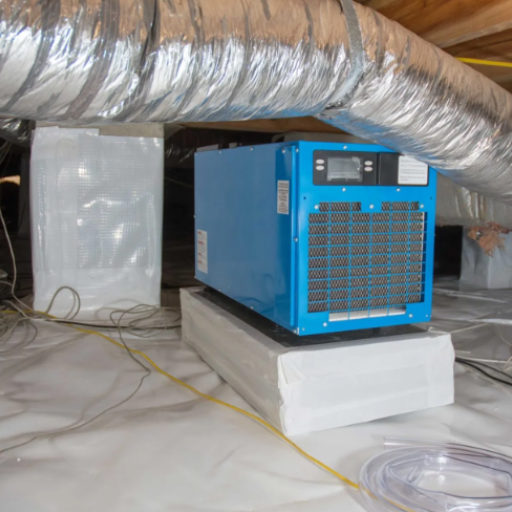
The cost to install a dehumidifier in your crawl space typically ranges from $1,000 to $3,000. This estimate includes the price of the dehumidifier itself, which can vary based on its capacity and features, as well as professional installation fees. For a basic unit, costs are usually on the lower end, while more advanced models designed for larger spaces or higher efficiency can lead to higher expenses. Professional installation ensures the unit is set up correctly and functions effectively from the start, offering long-term benefits for your home.
Breaking Down the Cost of Installing a Crawl Space Dehumidifier
The total cost of installing a crawl space dehumidifier varies based on several key factors, including the unit’s specifications, labor expenses, and any necessary additional work. On average, homeowners can expect to spend between $1,000 and $2,800 for a complete installation. Here’s a detailed breakdown of potential costs:
- Dehumidifier Unit Price
The cost of the dehumidifier itself can range from $800 to $2,000, depending on the model’s size, energy efficiency, and advanced features like programmable settings or smart connectivity. A smaller unit designed for limited spaces generally costs less, while larger or high-tech models for expansive crawl spaces may incur higher expenses.
- Professional Installation Fees
Hiring a certified professional to install the unit typically costs $200 to $500. This ensures proper setup, correct electrical connections, and optimal positioning to maximize effectiveness and longevity. A professional installation also mitigates the risk of potential damage or voiding any manufacturer warranties.
- Crawl Space Preparation
If your crawl space needs improvements before installation, such as sealing, insulation, or mold remediation, these costs can add an additional $500 to $3,000. Sealing the crawl space improves the overall efficiency of the dehumidifier and prevents moisture intrusion, which can significantly impact the longevity of the device.
- Ongoing Maintenance Costs
While not part of the upfront installation, it’s worth considering future maintenance. Filters may need replacement every six months, with costs ranging from $20 to $50 per filter, and regular servicing could range from $100 to $200 annually to ensure peak performance.
Understanding these costs will help homeowners choose the right dehumidifier and budget accordingly. While initial expenses can seem significant, a properly installed and maintained dehumidifier provides long-term savings by preventing structural damage and improving indoor air quality.
Professional vs. DIY Dehumidifier Installation
When deciding between professional and DIY dehumidifier installation, it’s essential to weigh the costs, expertise, and tools required for each approach. A professional installation typically costs between $200 and $500, depending on the complexity of the setup, the type of dehumidifier, and regional labor rates. Professionals ensure that the unit is correctly installed, optimally placed, and compatible with your home’s existing HVAC system, if applicable. This option provides peace of mind, particularly for whole-house dehumidifiers, which may require ductwork integration or electrical modifications.
On the other hand, opting for a DIY installation can save money upfront, with standalone units requiring minimal assembly and no specialized tools. These portable dehumidifiers are generally user-friendly and designed for simple placement and activation, making them suitable for smaller spaces like bedrooms or basements. However, improperly installed units, especially whole-house models, could result in inefficiencies or damage to your home’s systems.
Statistically, homeowners who seek professional installation report fewer issues with dehumidifier performance over time compared to those who DIY, especially for larger units. Considering that dehumidifiers can impact air quality and energy efficiency, consulting a trained technician may be worth the additional investment to maximize long-term benefits. Ultimately, the choice depends on your experience level, the scope of installation, and your budget.
Additional Costs: HVAC System and Other Considerations
When integrating a dehumidifier into an HVAC system, several cost factors should be considered. A whole-house dehumidifier, for example, typically costs between $1,000 and $3,000 for the unit alone, with installation fees ranging from $500 to $2,000 depending on the complexity of the system. If your HVAC system requires updates or modifications to accommodate the dehumidifier, such as improved ductwork or electrical upgrades, additional expenses can arise.
It’s also critical to evaluate the potential energy costs. A properly installed dehumidifier can optimize your HVAC system’s efficiency, potentially lowering monthly cooling costs by reducing the strain on the air conditioning unit, which accounts for about 12% of energy use in typical households. However, an improperly installed unit may inadvertently increase energy consumption, negating these savings. Maintenance costs are another consideration, as filters and regular servicing for the dehumidifier and HVAC system should be factored into your annual budget, often ranging from $100 to $300 per year.
Finally, homeowners should examine potential rebates or incentives for energy-efficient upgrades offered by local utilities, which can help offset initial costs. Proper planning and consultation with HVAC professionals can ensure you reap the maximum benefits while minimizing unexpected expenses.
Do You Need a Dehumidifier in Your Crawl Space?
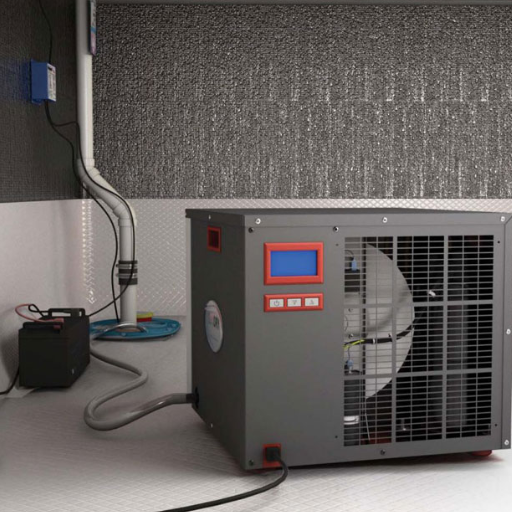
If your crawl space tends to retain moisture or feels damp, a dehumidifier may be essential. Excess moisture in a crawl space can lead to mold growth, wood rot, pest infestations, and even structural damage over time. A dehumidifier helps maintain optimal humidity levels, protecting your home and improving air quality. It’s particularly important if you live in a humid climate or notice signs of condensation, musty odors, or water stains. Assess your situation, and consult a professional if you’re unsure, as controlling moisture in a crawl space is key to a healthier and more durable home.
Signs You Need a Dehumidifier in a Crawl Space
- High Humidity Levels
If the humidity in your crawl space consistently exceeds 60%, it can create an ideal breeding ground for mold, mildew, and dust mites. Elevated moisture levels can often lead to unpleasant odors that seep into your living space. A reliable hygrometer can help you monitor these levels and determine if a dehumidifier is necessary.
- Visible Mold or Mildew Growth
The presence of mold or mildew on surfaces such as wood beams, insulation, or walls signals excessive moisture. Not only does this compromise the structural integrity of your home, but it also poses health risks like respiratory issues and allergies.
- Condensation on Walls or Pipes
Condensation forming on pipes, ductwork, or walls within the crawl space is another clear indicator of excessive humidity. This excess moisture, if unchecked, can contribute to wood rot and corrosion, weakening the structural elements of your home.
- Musty Odors
Persistent musty or damp odors emanating from underneath your home suggest poor air quality and moisture buildup. This smell often indicates mold growth or standing water, both of which can compromise your indoor environment.
- Pest Infestations
A damp and humid crawl space can attract pests like termites, rodents, and other insects, which thrive in such conditions. Addressing the humidity issue can help deter pests, protecting your home from extensive damage.
- Water Stains or Pooling Water
Noticeable water stains or standing water in your crawl space indicate poor drainage or excessive moisture. Over time, this can lead to foundational issues and exacerbate humidity-related problems, necessitating the use of a dehumidifier.
- Health Symptoms in Household Members
Increased indoor humidity can worsen allergies and asthma symptoms in sensitive individuals. If family members experience ongoing respiratory problems or allergic reactions, the crawl space may be a contributing factor.
- Warped Flooring or Structural Damage
Moisture in your crawl space can travel upward into your home, causing floors to warp, wood to swell, and paint to peel. This structural degradation not only affects the home’s appearance but also its value.
By addressing these warning signs early and installing a dehumidifier, you can prevent costly repairs, improve your home’s air quality, and maintain a healthier living environment.
Impact of Crawl Space Moisture on Living Space
Crawl space moisture significantly impacts the overall comfort and health of your living space in numerous ways. Excess humidity from the crawl space often rises into the upper levels of your home, contributing to a higher indoor humidity level. Studies show that nearly 50% of the air within a home originates from the crawl space or basement, emphasizing the importance of its condition.
This elevated moisture level fosters the growth of mold and mildew, leading to unpleasant odors, allergic reactions, and increased asthma symptoms in occupants. It also creates an inviting environment for pests like termites and cockroaches, which thrive in damp conditions and can damage your home’s structure over time.
Economically, high humidity levels force HVAC systems to work harder to maintain comfortable temperatures, driving up energy bills. Additionally, the structural degradation caused by moisture, such as wood rot and rusted metal, can lead to expensive repairs if left untreated. A well-maintained crawl space, equipped with proper ventilation and a dehumidifier, can mitigate many of these risks, enhancing both the functionality and longevity of your home.
Alternatives to Using a Dehumidifier
While dehumidifiers are a popular choice for moisture control, there are other effective and innovative methods to manage excess humidity in your home. These alternatives can prevent excessive dampness while reducing energy consumption and long-term costs.
- Improved Ventilation Systems: Enhancing airflow is a natural way to combat moisture buildup. Installing exhaust fans in areas prone to high humidity, such as bathrooms, kitchens, and laundry rooms, can significantly reduce moisture levels. Additionally, opting for energy-efficient ventilation systems with heat recovery can improve indoor air quality while maintaining comfortable humidity levels.
- Moisture-Resistant Insulation: Using spray foam or rigid foam insulation in walls, crawl spaces, and basements helps create a barrier against moisture infiltration. These materials prevent condensation and decrease humidity by limiting the pathways for moisture to enter your home.
- Vapor Barriers in Crawl Spaces: Placing a polyethylene vapor barrier on the floors and walls of your crawl space effectively locks out ground moisture. Properly sealed vapor barriers, combined with adequate ventilation or encapsulation techniques, can significantly lower humidity levels in the home above.
- Absorption Materials: For a small-scale or temporary solution, desiccant materials like silica gel or calcium chloride are excellent at pulling moisture out of the air. These options are especially useful for confined spaces such as closets, cabinets, or storage areas.
- Natural Solutions: Incorporating houseplants like peace lilies, Boston ferns, or areca palms can help regulate humidity levels naturally. These plants absorb moisture from the air, contributing to overall balance while enhancing indoor aesthetics.
- Heating and Cooling Adjustments: HVAC systems, when optimized, can assist in controlling humidity as a secondary function. Ensure filters are clean and the system is functioning efficiently to avoid exacerbating moisture issues. Adding smart thermostats allows better temperature and humidity monitoring.
By employing one or a combination of these alternatives, homeowners can control humidity effectively, safeguard their living space, and create a healthier, more comfortable environment—without solely relying on a dehumidifier.
What are the Benefits of Installing a Crawl Space Dehumidifier?
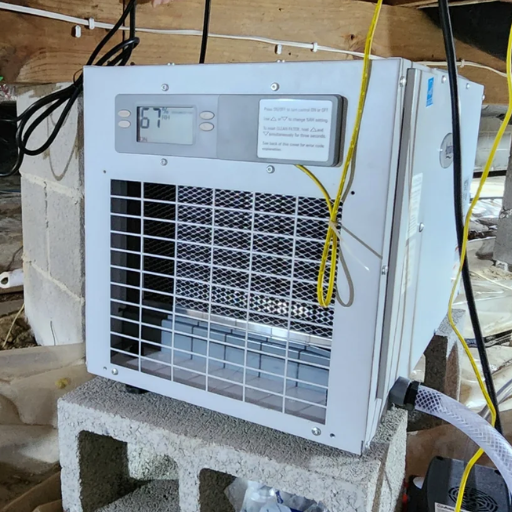
Installing a crawl space dehumidifier offers several key benefits for your home. First, it helps prevent mold and mildew growth by reducing excess moisture, which can damage your home’s structure and compromise indoor air quality. Second, it protects against wood rot and pests, such as termites, that thrive in damp environments, thereby extending the lifespan of your crawl space and foundation. Finally, a crawl space dehumidifier contributes to a healthier living environment by minimizing allergens and improving overall air quality in your home.
Improving Air Quality with a Dehumidifier
Using a dehumidifier has made a noticeable difference in my home’s air quality. By reducing excess moisture, it has helped prevent issues like mold, mildew, and allergens, creating a healthier and more comfortable living environment. I’ve also found it protects my home’s structure and keeps pests at bay, ensuring both safety and longevity.
Preventing Crawl Space Repair Costs
Maintaining my crawl space properly has been key to avoiding costly repairs. I ensure it’s well-ventilated, monitor humidity levels using a dehumidifier, and address any water leaks promptly. Sealing cracks and installing a vapor barrier have also helped to keep moisture out, preventing damage and preserving the integrity of my home’s foundation.
Long-term Savings with a High-Quality Dehumidifier
Using a high-quality dehumidifier has been a game-changer for me in the long run. It not only keeps humidity in check but also prevents mold growth and structural damage, which could lead to expensive repairs. Though the initial investment was significant, the savings in maintenance costs and the enhanced durability of my home have made it well worth it.
Reference Sources
-
Angi: Provides detailed cost breakdowns, including average costs ranging from $3,000 to $9,200, depending on size and encapsulation needs. Source
-
HomeGuide: Offers insights into unit and installation costs, with averages between $1,000 and $3,000, and factors influencing pricing. Source
-
Bay Crawl Space: Shares professional installation costs, ranging from $1,860 to $2,510, and reviews of top dehumidifier brands like Aprilaire and Santa Fe. Source
Frequently Asked Questions (FAQs)
Q: What are the main cost factors for a crawl space dehumidifier?
A: The main cost factors include the type of dehumidifier you choose, the size and condition of your crawl space, whether you need a crawl space dehumidifier with a pump, and the complexity of the installation process.
Q: How much does a crawl space dehumidifier cost on average?
A: On average, a crawl space dehumidifier costs between $800 and $2,500, depending on the brand, capacity, and additional features like a pump.
Q: What is involved in crawl space dehumidifier installation?
A: Crawl space dehumidifier installation involves selecting the best crawl space dehumidifier for your needs, placing it correctly in the crawl space, and ensuring proper drainage and electrical connections.
Q: How much should I budget for dehumidifier installation costs?
A: Dehumidifier installation costs typically range from $500 to $1,500, depending on the complexity of the installation and any additional work needed, such as electrical upgrades or structural modifications.
Q: Is it necessary to encapsulate a crawl space before installing a dehumidifier?
A: While not necessary, encapsulating a crawl space can enhance the effectiveness of a dehumidifier by sealing out moisture and reducing humidity levels.
Q: Can I use a basement dehumidifier in a crawl space without encapsulation?
A: Yes, you can use a basement dehumidifier in a crawl space without encapsulation, but it may not be as effective in controlling moisture compared to using a specific crawl space dehumidifier.
Q: What is the best crawl space dehumidifier for large areas?
A: The best crawl space dehumidifier for large areas is often a commercial dehumidifier with pump capabilities, like the Aprilaire crawl space dehumidifier, which can handle higher moisture levels and larger spaces.
Q: How often should I perform dehumidifier installation and maintenance?
A: Regular maintenance should be performed at least once a year, including cleaning filters and checking for any issues in the dehumidification system to ensure it remains effective in keeping your crawl space dry.
Q: Why do I need a crawl space dehumidifier to protect your home?
A: A crawl space dehumidifier helps protect your home by reducing moisture levels, preventing mold growth, and minimizing structural damage caused by excess humidity.
Q: What are the benefits of installing a whole-house dehumidifier instead?
A: Installing a whole-house dehumidifier can provide consistent humidity control throughout your home, potentially reducing the need for multiple dehumidifiers and simplifying maintenance while ensuring your entire home remains comfortable and moisture-free.

